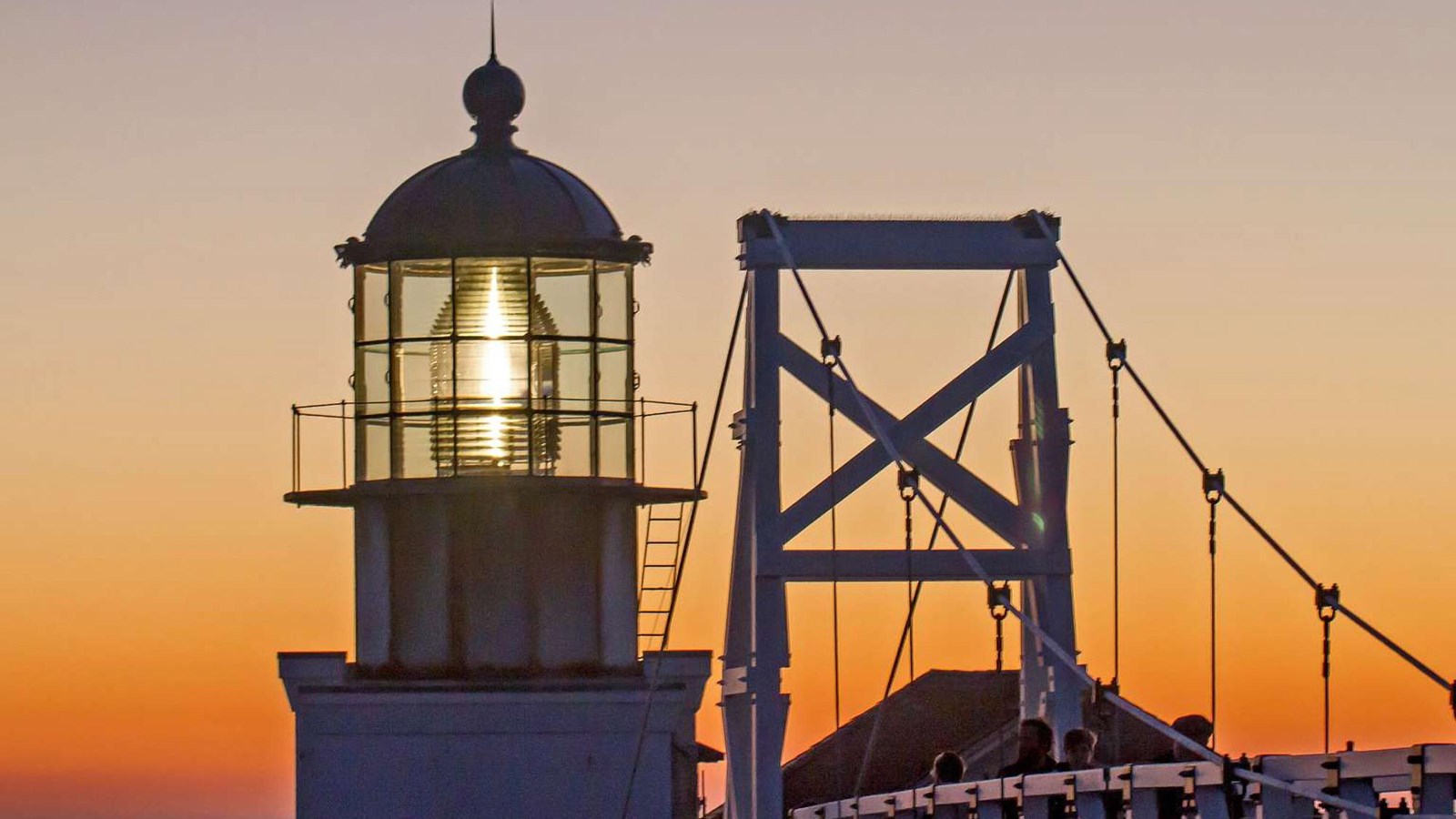Last updated: July 10, 2025
Place
Point Bonita Lighthouse

Mel Mashman
Parking - Auto, Scenic View/Photo Spot
NOTE: There is limited cell service at the lighthouse. To use the app with partial functionality on-site, download the data to your phone ahead of time.
To provide seafarers safe passage through the treacherous waters of the Golden Gate Strait, a network of lighthouses was built in the 1850s. The first light on Alcatraz illuminated the path for ships directly in front of Golden Gate, while the second light at Fort Point marked the bay's southern edge. To the north, the third light shone from Point Bonita.
Point Bonita Lighthouse is at the end of the Point Bonita Trail. Access to the lighthouse involves passing through the Point Bonita Tunnel. Access through the tunnel is open according to the following schedule:
Prismatic Power
Back in the day, Point Bonita was powered by a Fresnel lens, a design that was first developed in 1822. The genius of the Fresnel lens is that it's able to focus a natural light source into a powerful beam. Without any kind of focus, an open flame loses nearly 97% of its light. Even with reflectors, a flame still loses 83% of its light, but a Fresnel is a horse of a different color. Fresnel lenses focus a flame so intensely that they only lose 17% of their light, which is why ships could see the light at Point Bonita up to 18 miles out to sea.
Tether Kids
The lightkeeper's quarters were located right next to the lighthouse. As the work was hard and the hours long and lonely, some of the lighthouse keepers of the late 19th and early 20th century brought their families to live with them. While living on this treacherous cliff, they would strap their children into harnesses attached to ropes tied around a post whenever they played outside so they wouldn't fall off the edge during a stiff wind or while chasing after a stray ball. One must wonder if this was done more for the amusement of the parents than anything else.
"You Must Go Out..."
In 1874, the government approved plans for lifesaving stations at the entrance of Golden Gate, but not until 1899 did construction on the Point Bonita US Life Saving Station begin. Plans called for a residence, cisterns, fire and storage sheds, a garage and sidewalks. Construction was to last 90 days, but rough swells and difficult terrain delayed the project's completion. Unsafe conditions due to inclement weather even led to an accident that resulted in the contractor's foot being crushed.
Point Bonita Life Saving Station had two boats; a heavy lifeboat that was essential to navigating in the dangerous conditions of the rocky coast, and a surfboat, a lighter vessel that was launched directly through the surf. Typically, eight to ten men manned the lifesaving station, which was operated by the Coast Guard. Some say the brave men's motto was "You must go out, but you don't have to return."
Hat Cliff
A perennial stiff breeze has led to a geologic anomaly here at Point Bonita. As you walk out of the tunnel look to your left and see the thickening strata of assorted caps that's formed along the cliffside. If you're wearing a hat, be careful not to fall victim to the wily wind!
